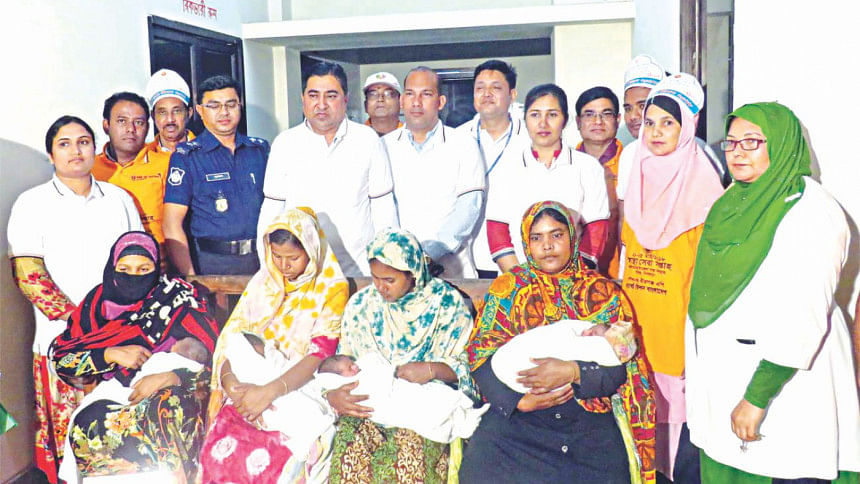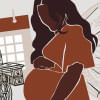Only the best for mother and child

For over 75 years, the Finnish government has been giving a “baby box” of clothes, sheets, toys and supplies to every expectant mother. A matter of national pride, the initiative is credited with helping Finland achieve one of the world's lowest infant mortality rates.
Since last July, each baby born at the Birganj upazila health complex in Dinajpur is also provided with a gift hamper. It is but one part of a quiet revolution in maternity healthcare being implemented by local doctors, midwives and public officials. With the aims of eliminating unnecessary caesarean section delivery and enhancing accessibility, the Birganj healthcare team is setting an example for others to follow.
The driving force behind the change is the upazila's health and family planning officer, Dr Zahangir Kabir. “Most pregnant women, especially from rural areas, don't take full advantage of public healthcare. For reasons including a lack of awareness and financial hardship, many mothers-to-be experience pregnancy at home. It is one cause of high mortality rates among mothers and newborns.”
An associated problem is the overuse of caesarean section delivery at public facilities. The World Health Organisation reports that caesarean section is used in around 37 percent of deliveries in Bangladesh, while a reasonable rate would be close to 10 percent.
“People run after caesareans,” remarks Dinajpur's civil surgeon Dr Mawla Baksh Chowdhury. “It's a risky option.” Moreover, the overuse of costly caesareans has helped earn the public system a reputation for being expensive.
Together with local doctors and midwives Dr Kabir favoured change. They aimed to increase the percentage of natural births at the complex, to implement free, quality antenatal and postnatal care for mothers and infants, and to raise awareness of the risks of caesarean and home delivery.
Their first move was to develop the first floor of the complex into a maternity friendly environment with a well-equipped obstetrics department, a six-bed labour ward, antenatal and postnatal care units and a welcoming breastfeeding corner.
They also introduced a maternity card system to facilitate efficient service. “Pregnant women get support on arrival without delay,” Dr Polash, from the complex, says.
The healthcare team also noted that many infants suffer from skin conditions including mosquito bites due to the use of dirty clothes from low-quality shops and the absence of nets. Thus the gift hamper for newborns was developed, with clothes, skincare supplies and a mosquito net.
In addition, doctors and midwives hold monthly yard meetings in rural areas to introduce the improved system. “We are trying to bring knowledge to people's doorsteps,” says Dr Kabir.
The new approach was quick to find success. Within a month the first two normal deliveries were conducted at the complex, a number which reached 217 by year's end. So far this year 145 normal births have been achieved, compared to just 94 for the whole of 2016.
Meanwhile, the number of pregnant women referred to hospitals has reduced by more than half and thus far, thankfully, all mothers and newborns have done well.
“We used to avoid the upazila health complex because it had a reputation for poor quality treatment,” says 23-year-old Rubina Haq, from a farming family in Birganj. “Six years ago my first child was delivered by caesarean and it cost Tk 15,000. My second child was born this March at the health complex. It was a normal delivery, and free.
“To be honest I was afraid to come to the health complex but everything happened properly and safely, thanks to the staff,” Rubina adds. She is one of a growing number of new mothers to sing the praises of the improved system.
“The experience of the Birganj upazila health complex is a model,” says civil surgeon, Dr Chowdhury. “They have made an extraordinary effort to prevent mother and newborn fatalities. We have already started to replicate their initiative at seven other health complexes in Dinajpur.”

 For all latest news, follow The Daily Star's Google News channel.
For all latest news, follow The Daily Star's Google News channel. 





Comments